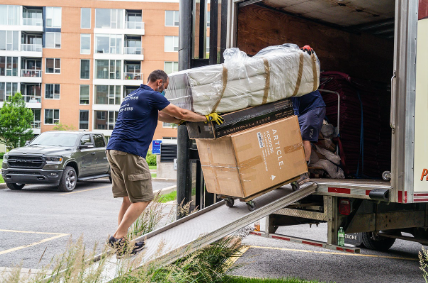
Relocating to a new home can be both exciting and stressful. One of the biggest concerns for many people is ensuring that their valuables remain safe and undamaged during the move. Whether you’re moving across town or hiring Intercity Movers, taking the right steps to protect your belongings is crucial. This comprehensive moving checklist will help you secure your valuable items and enjoy a smooth relocation process.
1. Create an Inventory of Your Valuables
Before you start packing, make a detailed inventory of all your valuable items. This will help you keep track of everything and provide a reference in case anything goes missing. Follow these steps:
-
List high-value items such as jewelry, electronics, important documents, and antiques.
-
Take photos or videos of your items for documentation.
-
Keep a digital or physical copy of your inventory.
2. Gather High-Quality Packing Materials
Using the right packing materials can significantly reduce the risk of damage. Invest in:
-
Sturdy Moving Boxes: Opt for double-walled boxes for fragile items.
-
Bubble Wrap & Packing Paper: Protect delicate items from shocks and vibrations.
-
Furniture Covers & Blankets: Prevent scratches and dents on large furniture pieces.
-
Packing Tape & Labels: Secure your boxes and ensure easy identification.
3. Pack Fragile Items with Extra Care
Fragile items require careful handling. Here’s how you can keep them safe:
-
Wrap Each Item Individually: Use bubble wrap or packing paper.
-
Use Dividers for Glassware: Prevent glasses from clinking together.
-
Pack Heavier Items at the Bottom: Lighter items should be placed on top.
-
Label Boxes as ‘Fragile’: This ensures careful handling by the movers.
4. Secure Important Documents & Valuables
Some items should be kept with you rather than packed away in a moving truck. These include:
-
Passports, IDs, and birth certificates.
-
Legal documents, property deeds, and contracts.
-
Expensive jewelry and family heirlooms.
-
Cash, credit cards, and essential medical records.
Tip: Store these items in a separate, secure bag and keep them with you during the move.
5. Disassemble Large Furniture & Electronics
To minimize the risk of damage, dismantle bulky furniture and electronics before the move:
-
Remove table legs, bed frames, and shelves.
-
Label screws and small parts in zip-lock bags.
-
Take pictures of cable connections for easy reassembly.
-
Use original boxes for electronics if available.
6. Protect Appliances Before Moving
Household appliances can be tricky to move. Follow these precautions:
-
Refrigerators: Defrost and clean at least 24 hours before moving.
-
Washing Machines: Secure the drum to prevent internal damage.
-
Microwaves & Ovens: Remove trays and pack separately.
-
Label Cords: Keep cords wrapped neatly and labeled for easy setup.
7. Label & Organize Your Moving Boxes
Proper labeling can make unpacking much easier and help prevent mishandling.
-
Use color-coded labels for different rooms.
-
Mark boxes containing valuables with a ‘Handle with Care’ sticker.
-
Number your boxes and cross-check with your inventory list.
8. Choose a Reliable Moving Company
A professional moving company can make a huge difference in ensuring the safety of your valuables. When hiring Intercity Movers, look for:
-
Positive customer reviews and ratings.
-
Proper licensing and insurance coverage.
-
Transparent pricing with no hidden costs.
-
Experience in handling fragile and high-value items.
9. Communicate Special Instructions to Movers
If you have fragile or expensive items, inform your movers in advance. Provide clear instructions on how they should handle your belongings.
-
Point out valuable and delicate items.
-
Specify boxes that should not be stacked.
-
Confirm the handling procedures for antiques and artwork.
10. Consider Moving Insurance
Even with the best precautions, accidents can happen. Protect yourself by considering moving insurance:
-
Basic Coverage: Most movers provide standard liability coverage.
-
Full Value Protection: Ensures reimbursement for damaged/lost items.
-
Third-Party Insurance: Extra protection for high-value items.
11. Plan for Storage if Needed
If your new home isn’t ready yet, you may need temporary storage. Look for secure, climate-controlled storage options to prevent damage to furniture, electronics, and documents.
12. Conduct a Final Walkthrough
Before the moving truck leaves, do a final check:
-
Ensure all valuables are accounted for.
-
Double-check closets, drawers, and storage areas.
-
Confirm that fragile items are well-protected.
13. Unpack Carefully & Inspect Items
Once you reach your new home:
-
Inspect each box for damage before unpacking.
-
Cross-check with your inventory list.
-
Set up furniture and electronics following your pre-move documentation.
Conclusion
Moving day doesn’t have to be stressful if you take the right precautions. By following this checklist, you can ensure your valuables stay safe throughout the process. Whether you’re hiring Intercity Movers for a long-distance move or looking for office movers in Auckland for a business relocation, careful planning will make the transition smooth and hassle-free.
By prioritizing organization, communication, and proper packing techniques, you can protect your belongings and start your new journey with peace of mind. Safe moving!





Leave a Reply